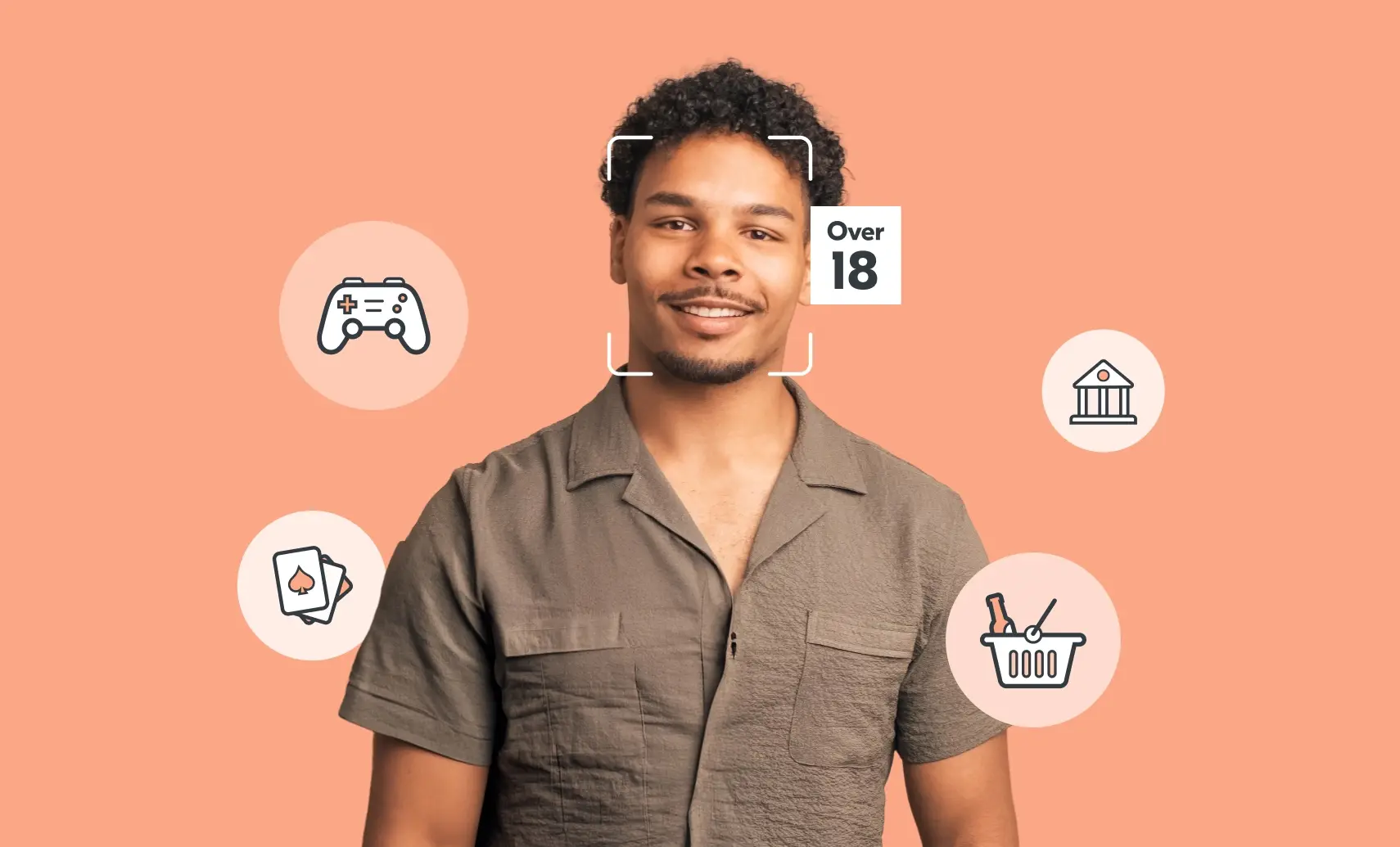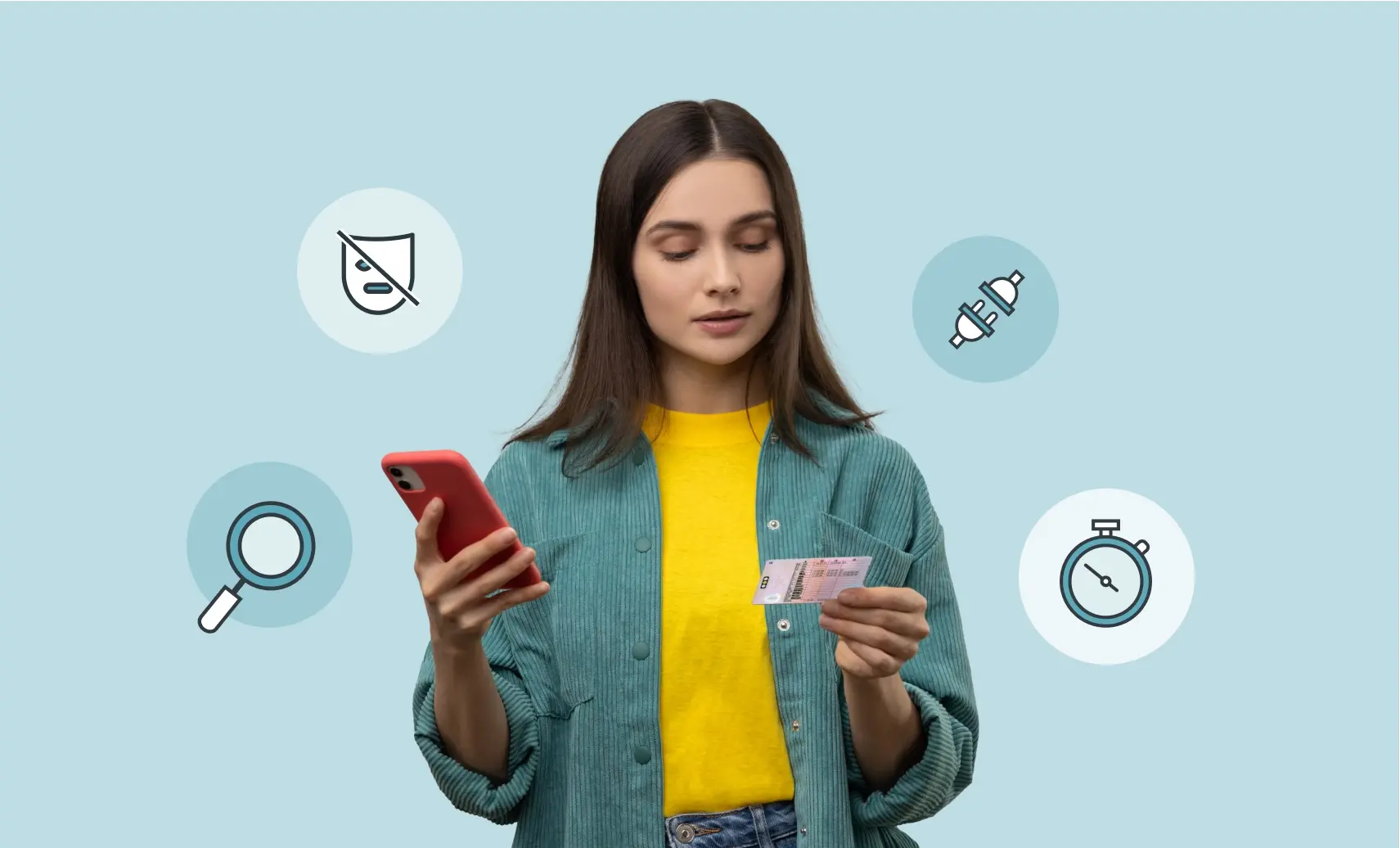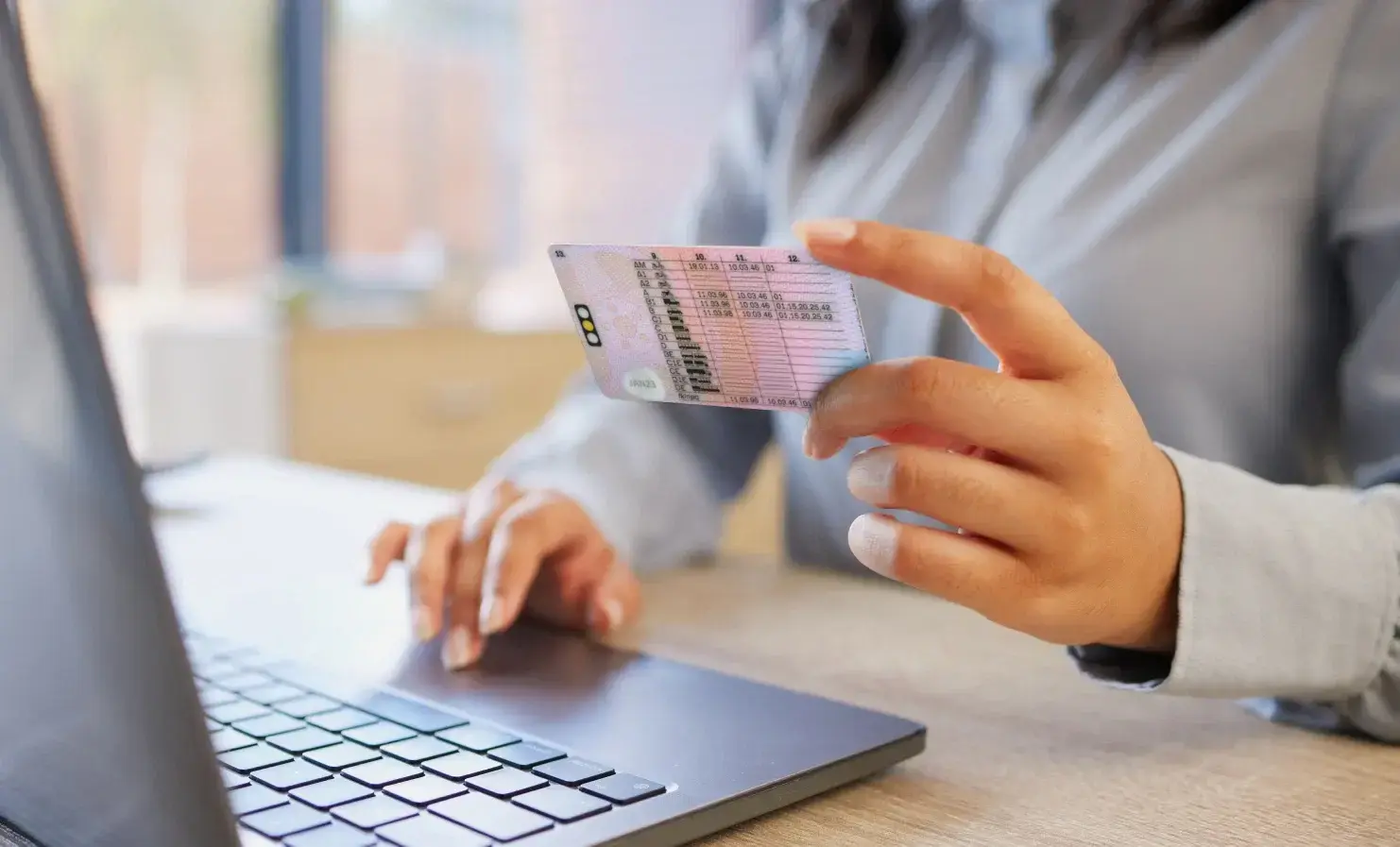
Checking users’ ages has never been more critical for businesses catering to diverse audiences. However, they’re faced with the challenge of effectively verifying the ages of their users whilst maintaining seamless and user-friendly experiences.
Yoti’s facial age estimation is a secure, privacy-preserving way to do just that. Our technology is used across a variety of industries, both online and in-person. This includes retail, social media, dating, gaming, gambling and financial services.
In this blog, we explore how businesses are using facial age estimation to create safer, more positive experiences for their users.
What is facial age estimation?
Facial age estimation does exactly what it sounds like – it estimates someone’s age from their face.
A user takes a selfie and the technology estimates their age by looking at the facial features in the image. To the technology, the image is simply a pattern of pixels, and the pixels are numbers.
Our facial age estimation technology has been trained to spot patterns in numbers, so it learns ‘this pattern is what 16-year-olds usually look like’. The same image is used for a liveness check to make sure it’s a real person taking the image (and not using a photo or video). Our technology returns an estimated age and the image is then deleted.
Users do not need to use any identity documents or share personal information like their name, date of birth or address.
How accurate is facial age estimation?
Our facial age estimation technology correctly estimates 99.5% of those aged between 6 and 12 as under the age of 13. And 99.3% of those aged between 13 and 17 are correctly estimated as under the age of 21.
The National Institute of Standards and Technology (NIST) is the global benchmarking standard for facial age estimation technology. They’ve stated that Yoti is the most accurate facial age estimation algorithm for those aged between 13 and 16. This is a key age group for online age regulations and child safety.
We publish the accuracy rates of our facial estimation technology in our white papers. This is so we’re fully transparent with everyone who may interact with it.
Improving child safety
Some sites with user-generated content include content that is created specifically for adults. In these cases, it’s vital that young people can’t access or interact with these platforms. However, this needs to be done in a way that doesn’t make it difficult for adults to gain access to these sites.
For example, OnlyFans uses our facial age estimation as a secure, privacy-preserving and robust way of age-checking their users. Since August 2021, we’ve completed millions of facial age estimations for the platform.
They say that our “market leading age assurance technology provides the right balance between accurately assessing users’ ages and respecting their privacy.”
In the offline world, another way that our technology is used is in gaming machines. Regal Gaming Technologies is a leading provider of gaming machines to the leisure and hospitality industry. They’ve integrated facial age estimation into their machines to create safer and more age-appropriate experiences. Users verify their age at the terminal, which ensures that young people can’t use gaming machines designed for those over 18.
Creating age-appropriate experiences
There’s growing agreement that more needs to be done to protect young people online. In order to tighten their child protection measures, we’ve worked with Instagram since 2022 to help them verify the ages of their users.
As an additional step, Instagram has now introduced Teen Accounts. New users under 18 are, by default, given the strictest privacy settings on their accounts. If they want to change their date of birth from under 18 to over 18, users must prove their age.
They can do this by either uploading an identity document or using facial age estimation, with over 80% of users choosing the latter. Since many young people don’t have access to official documents, facial age estimation offers Instagram users an inclusive way of verifying their age online.
Following the success on Instagram, Meta also uses facial age estimation on Facebook Dating. This ensures that only adults can sign up and use the service, an important step in protecting children and young people online. It also allows users to only interact with people within their desired age range.
Whilst some platforms are designed for adults, others are made exclusively for young people. Yubo is a social media app for teenagers, used by over 60 million users in more than 140 countries.
Since the platform is made for children, Yubo faces the significant challenge of ensuring that its users are protected online. They needed to find a way to separate their users into different communities based on their age.
Yubo became the first social media platform to verify the age of every user. The platform uses facial age estimation, as many young people don’t hold or have access to identity documents to prove their age. By having an inclusive and accessible way to verify age, young people on the platform can enjoy safer, more positive experiences online.
Providing exclusive 18+ features
Lockwood Publishing, the creators of Avakin Life, wanted to introduce exclusive content and game features for those aged over 18. But they faced the challenge of how to verify the age of players, without adding friction to the gaming experience. Lockwood Publishing didn’t want to rely on self-assertion, which is when people state their age or date of birth themselves. Though quick to do, players could easily give a false answer.
Lockwood Publishing opted for facial age estimation, as a quick yet robust method of age assurance. Our facial age estimation returns an age result in seconds without the need for identity documents.
Players aged over 18 can now access exclusive age-restricted game spaces and have confidence that they’re interacting with other adults.
The gaming industry is now home to 3.2 billion gamers – that’s over a third of the global population. As platforms introduce new features, they need to be sure that players are of an appropriate age. This may have an effect on which features players can unlock or the other players they can interact with.
Meeting compliance requirements
Retailers face a huge task of having to verify their customers’ ages before they buy age-restricted goods. These include, but are not limited to, energy drinks, vapes, tobacco, lottery tickets, games, fireworks and medicines. When brands sell these goods directly to consumers, they need to check their customers’ ages. This could be during the account creation or checkout process.
This undertaking is made more challenging during online transactions as there’s no one to check a physical ID, such as a passport or driving licence.
Yoti works with THG Ingenuity, THG’s proprietary technology platform. THG Ingenuity’s platform powers the online direct-to-consumer growth of both THG’s own brands, such as Myprotein and LOOKFANTASTIC, as well as third-party clients such as Nestlé, Elemis and Homebase.
They specialise in taking brands direct-to-consumers globally. All clients of THG Ingenuity have access to Yoti’s age verification solutions. This includes our facial age estimation technology, which helps THG’s clients meet their regulatory requirements for selling age-restricted goods and services.
Streamlining the self-checkout
Age verification at supermarket self-checkouts accounts for 40-50% of all interactions with supermarket staff.
EDEKA Jaeger, part of the German supermarket group EDEKA, uses our technology at its store in Stuttgart Airport. Customers can select facial age estimation as a way to prove their age at the self-checkout terminal. According to the supermarket chain, “over 80 per cent of age-restricted goods were automatically approved” in the first week of use.
By using facial age estimation, retail staff were able to use this extra time to perform other tasks. The technology can also help to reduce potential conflicts between staff and customers, as checking age is one of the most common triggers of abuse towards retail staff.
In the UK, the Mandatory Licensing Conditions currently state that a person must observe and approve the sale of alcohol. There have been calls to update this law to allow alternative methods to be accepted, such as facial age estimation. The technology has even been tested by supermarkets, as part of a trial run by the Home Office. Major supermarkets including Asda, Morrisons and the Co-op all participated in the trial.
During the trial, 98,000 age checks were performed, of which up to 40% were done with facial age estimation. There were no reported sales of underage customers purchasing age-restricted items.
The Home Office has stated that they’re due to publish an update on the Mandatory Licensing Conditions shortly.
Making online services more inclusive
As more services move online, it’s crucial that people aren’t locked out of accessing them simply because they can’t verify who they are. Without identity documents, many people are unable to prove their age.
Modak is a US-based fintech platform aimed at people under 18. They aim to empower young people through financial learning and gamification. But Modak found that many people were struggling to verify their age as many young people don’t own government IDs.
By working with Yoti, over 25,000 young people have been able to join the platform using our facial age estimation. Our tech helps teens to express themselves through the platform and supports the global Modak community.
Protecting children’s data
In order to comply with legislation, organisations which hold children’s data need to know the ages of their customers. This allows them to put the appropriate safeguards in place when handling this personal data. Children merit specific protection when their personal data is used for marketing purposes, monetisation or creating user profiles.
Facial age estimation can be used as a fast and privacy-preserving way to check age. Companies can adhere to these regulations with an inclusive method that doesn’t require the user to have any identity documents or share personal data.
Organisations can ensure that they’re providing both age-appropriate experiences and using this data in line with regulatory requirements.
Conclusion
The integration of facial age estimation technology across various industries showcases its versatility. From enhancing customer experiences in retail to ensuring that people can enjoy age-appropriate experiences online, facial age estimation gives people an inclusive and accessible way of proving their age.
As regulation continues to evolve, businesses are choosing to use facial age estimation as an effective yet frictionless way of checking age.
If you’d like to know more about how your business could use facial age estimation, please get in touch.



